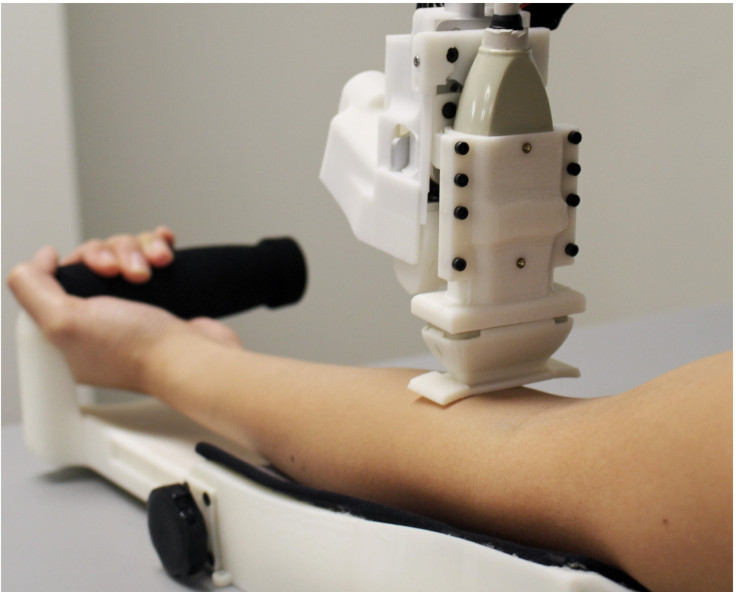Blood-Drawing Robot Will Use Ultrasound To Locate Patients' Vein With More Accuracy

KEY POINTS
- The blood-drawing robot is expected to be much more accurate than humans
- It can see under the skin using ultrasound technology and locate veins easily
- The robot may one day be used in ambulances
Researchers at Rutgers University and the Mount Sinai Hospital have developed a new robot that will help get rid of the jabbing needed to locate the vein on patients.
It can actually locate a vein much more accurately than human clinicians using ultrasound technology.
The blood-drawing robot is expected to help thwart issues such as infections and thrombosis when injecting lines or vaccinating.
“Obtaining venous access for blood sampling or intravenous (IV) fluid delivery is an essential first step in patient care. However, success rates rely heavily on clinician experience and patient physiology. Difficulties in obtaining venous access result in missed sticks and injury to patients and typically require alternative access pathways and additional personnel that lengthen procedure times, thereby creating unnecessary costs to healthcare facilities. Here, we present the first-in-human assessment of an automated robotic venipuncture device designed to safely perform blood draws on peripheral forearm veins,” the study, which was published in the World Scientific Journal under the title, “First-in-human evaluation of a hand-held automated venipuncture device for rapid venous blood draws,” stated.
The robot can easily draw blood, even from hard to access veins, something which requires repeated jabbing from patients. In such cases, generally, a separate ultrasound is required. The robot is fitted with an ultrasound machine and that is why it can detect veins with 87 percent accuracy in a study conducted with 31 participants.
Generally, clinicians fail 27 to 60 percent of the time while finding the vein.
The robot is a prototype that is being developed further. The researchers state that the model can be used in ambulances and emergency rooms for IV catheterization, dialysis and placing arterial lines.
It may help speedy diagnosis, which can be a boon in the times of virus outbreaks, such as the one that has recently emerged in China.
© Copyright IBTimes 2025. All rights reserved.





















